Christmas Cheer
One of the farmers involved in this story is Jose Antonia Nievas, whose life changed completely one Christmas morning, when something special happened.

Christmas Cheer
Christmas Stroll
He took his usual morning walk, feeling peppy from Christmas cheer. Walks were good to reflect on his year – what he liked, what he didn’t like, and all that had happened. He walked next to the stream on his property.
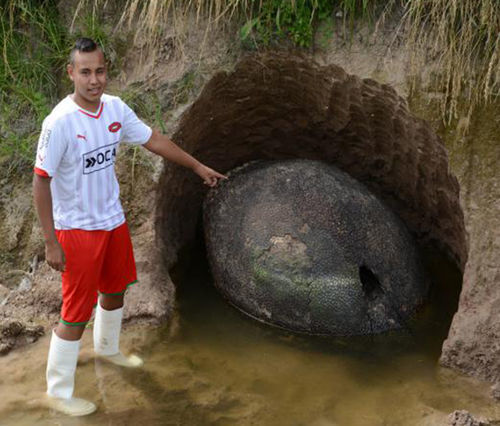
Christmas Stroll
Noticing It
As he looked up from his wandering feet, his eyes caught something highly unusual. It was at the mouth of the stream. To him it looked like a huge, rounded stone that came out of the bank of the stream.

Noticing It
Jose’s Curiosity
As he went to examine the stone, his curiosity peaked. The problem was, it was not actually a stone but rather something he had never seen before. The mud was in the way, so Jose immediately got to work digging.

Jose’s Curiosity
His Wife’s Help
He needed help, though, as the mud was really caked onto this object. He called his wife, Reina, so she could help him investigate. They needed to get a closer look to find out exactly what this weird object was.

His Wife’s Help
Careful Digging
They got to work on finding out what was hiding there. The object was dirty, so as they dug around it, they cleaned as well. They were careful not to damage the object, hoping that whatever it was was ground-breaking.

Careful Digging
Calling Police
The more they dug, the bigger the object seemed. It was huge. They worked for hours, but eventually realized that they couldn’t do this alone. They decided to get some more help, and who better to help than the police?

Calling Police
People Arrived
However, news travelled really fast that day. Soon after calling the police, people from the city began to gather. Just like that, on Christmas morning 2015, the small city of Carlos Spegazzini began to crowd around this mysterious so-called ‘rock’.

People Arrived
Rumors
The crowd chatted, the police debated, but not a single person knew what this was. Everyone tried to come up with a logical explanation but this was uncharted territory. The most helpful thing on the scene was actually a dog.

Rumors
The Dog
Even though it was hesitant to investigate, curiosity killed this dog. It sniffed, barked, and slowly moved closer and closer. People noticed this and whispers erupted. A dog would not bark at any old rock, so what exactly was it?

The Dog
Calling Experts
This made the police take a little more interest in what was happening. They eventually called in the local experts – two archaeologists. They arrived quickly, as news was spreading like wildfire. They instantly knew that this was no ordinary rock.

Calling Experts
Ancient Object
They confirmed that this object was ancient. They needed more information to find out what it was. They organised to transport this object so they could do proper testing on it and get to the bottom of this mystery object.

Ancient Object
On A Ledge
They had never seen anything like it. A fossil on a small farm in Argentina would make huge scientific leaps for them. The shell was so large that they had to stand on a ledge to get a good look.

On A Ledge
It Was Heavy
It was more difficult than they imagined as the object was heavier than expected. It was hard, with a scaly, egg-like exterior that confused even the experts. This meant more digging, and lifting it became much more of a challenge.

It Was Heavy
It Was A Fossil
They concluded that this was indeed a fossil – weighing almost 2 tons – and whatever had left this shell was massive. It was comparable to a humongous turtle shell and it wasn’t the first or last of its own kind.
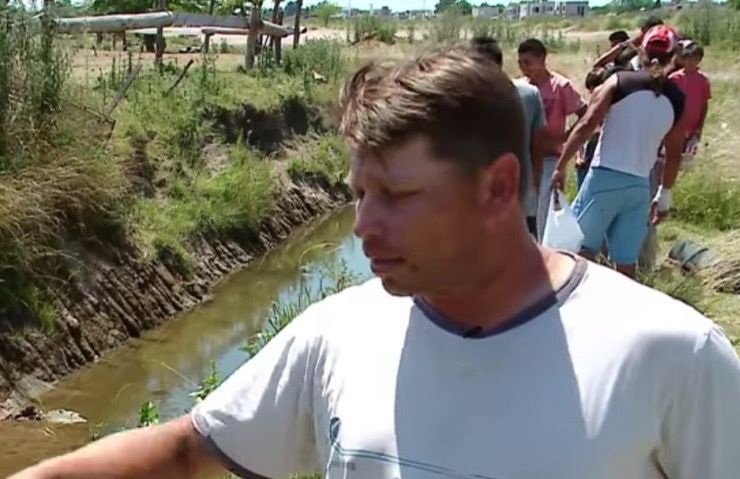
It Was A Fossil
Walking South America
Fossils just like this one had been found and were now in museums thanks to them being an important scientific discovery. It was actually the fossil of an ancient glyptodont. This was once a species that walked around South America.

Walking South America
Alongside Humans
A paleontologist named Alejandro Kramarz of the Bernardino Rivadavia Natural Sciences Museum confirmed that this was a glyptodont that existed centuries ago. It existed alongside the early humans and was an armored mammal like an armadillo but much, much larger.

Alongside Humans
Upside Down
These discoveries were so rare that even some scientists were skeptical of the existence of such an animal and thought discoveries were staged. The fossils are typically found upside down as the mammals die from being overturned like a turtle.

Upside Down
Jose’s Expertise
This made Jose’s find even more unlikely. How long had he been walking past this? On his little farm in Argentina, he had made history. Jose’s expertise were of plants and animals, not big fossils that are from the ice-age.

Jose’s Expertise
Protected
How did this fossil exist so long then? The mud actually acted as a barrier of protection for this behemoth fossil. An expert of the Natural History Museum in London, Adrian Lister, confirmed that this fossil is very much real.

Protected
Glyptodonts
After a little more research, there was no doubt present in the midst of scientists. These were the glyptodonts, who lived for tens of millions of years. They travelled far – migrating miles over South America. They even have a tail.

Glyptodonts
Their Tails
The tails are actually weapons, used by the males to fight other males during mating, a lot like some deer and their antlers. This was such a fantastic discovery that Reina, Jose’s wife, thought it was a joke at first.

Their Tails
An Egg
“My husband went out to the car and when he came back he said, ‘Hey, I just found an egg that looks like it came from a dinosaur’. We all laughed because we thought it was a joke.” She says.

An Egg
No Joke
Despite the laughter, it was not a joke at all. This particular ‘dinosaur’ fossil was one of the best preserved fossils of its species so Jose was incredibly lucky. This fossil is so useful, it allows for evolutionary paleontology studies.

No Joke
Investigating
They are now using the fossil to investigate the link between glyptodonts and some of its descendants. They have been comparing DNA to shelled animals. Although the glyptodonts have a shell like turtles, the are related to armadillos and pangolins.

Investigating
Another Farmer
While this was going on all the way in Argentina, a farmer in Michigan named James Bristle found another fossil at the same time. The farmers did not know that the biggest coincidence was happening, but they would find out.
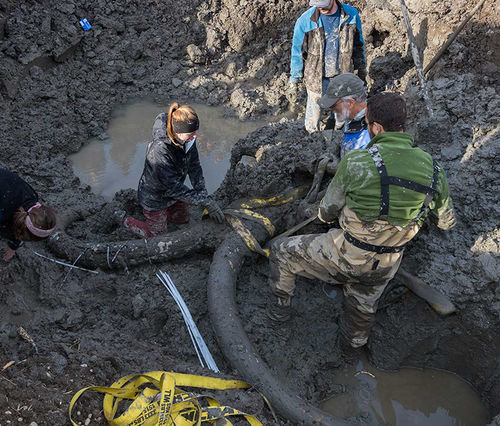
Another Farmer
Looking Around
James wasn’t taking a morning stroll around his farm. He was actually looking for a good place to put natural gas lines and thought that a barely-used soy field would do the trick. He found a spot and began working.

Looking Around
His Excavator
James wasn’t playing around. He got his excavator and began digging for the natural gas line. He had goals in mind. It was December 2015, and he wanted to be finished by October 2016 – before the snow began to fall.
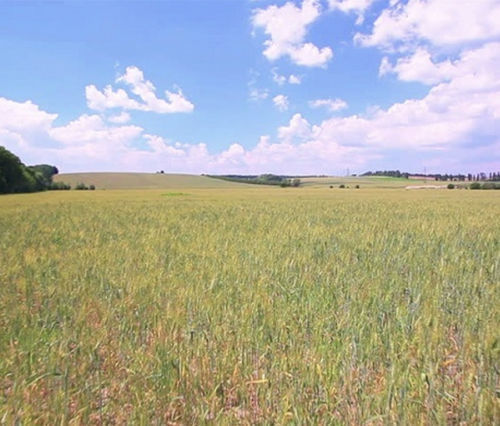
His Excavator
Something Hard
While working hard, James hit something that definitely was not the soil. He was used to the soft, fertile soil he used to grow soybeans. He also knew for a fact that there were no hard rocks or deep roots.

Something Hard
What Was It?
He hopped out the machine and frowned at the deep hole in front of him. Like Jose, he needed to investigate. He began to wipe dirt away with only his hands and felt something surprisingly smooth, having no jagged edges.

What Was It?
Curious James
Now James was seeping curiosity and couldn’t stop digging. He realized that he was holding a bone, but he had never seen anything like it before. It looked like a rib bone, but it was much larger than the average.

Curious James
Big Bones
James didn’t even let large animals roam the fields. It was larger than a cow or horse could ever be, so he dug some more. Could it be another glyptodont like Jose’s fossil? The excavation would take longer than expected.

Big Bones
Another Bone
It actually continued for another day. During this hectic excavation, they found another bone. The second bone was even more shocking than the first. It was bigger. It was also much longer than the first bone, but the same shape.

Another Bone
Ten Feet
They had to dig ten feet into the ground for a standard natural gas pipe. For an archeological site, they had to dig way deeper and far wider. Like with Jose, news was spreading and people were beginning to gather.

Ten Feet
Major News
Even major news outlets were trying to figure out what was going on, asking around just for stories. Rumors spread from lips to lips. One popular rumor was that it was a monster that had been buried many years ago.

Major News
A Skull
What made matters worse was that a skull had been dug up. The skull was pulled out of the ground and had tusks that were the size of a man. What could it be? People were saying dinosaur, or elephant.
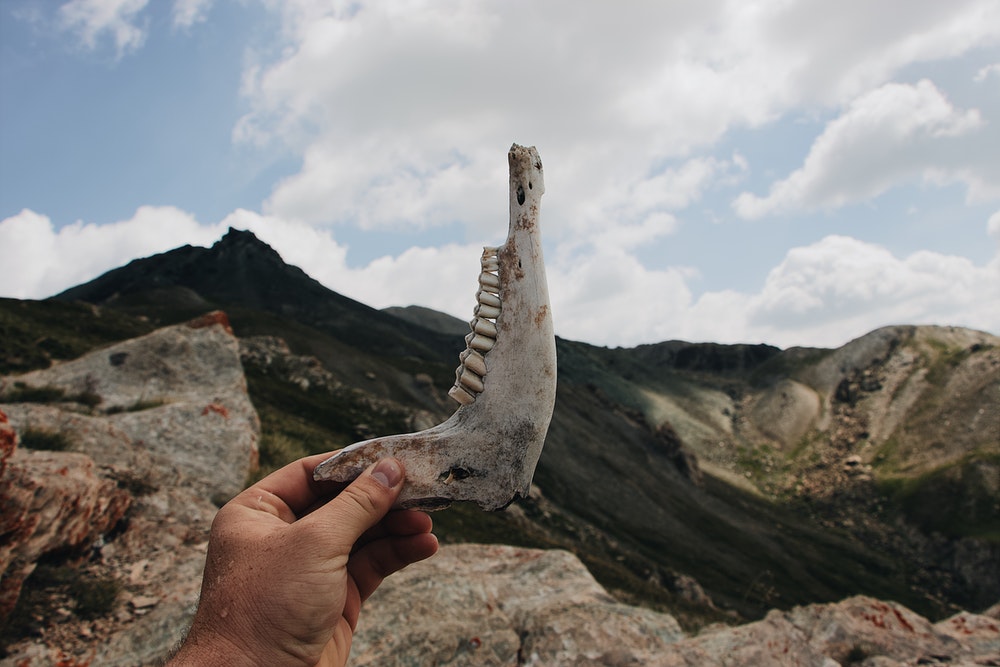
A Skull
An Elephant
But it couldn’t be! How could an elephant be in the middle of Michigan? Whatever it was, it was huge and James couldn’t handle it on its own. So he decided to contact someone who knew better – a university professor.
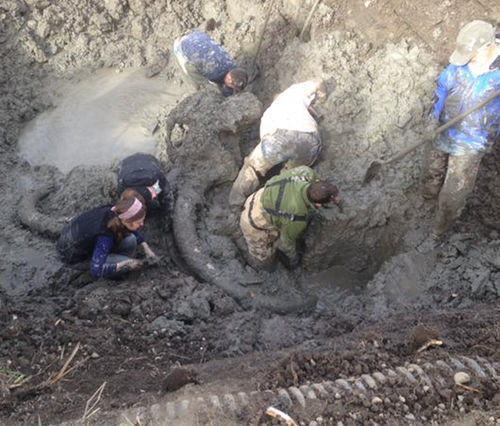
An Elephant
David’s Call
He contacted David Fisher of the University of Michigan. He is a professor who focuses on geology and paleobiology. At the time, he was the director of the University of Michigan’s Museum of Paleontology and received James’ phone call eagerly.

David’s Call
He Was Ecstatic
He gathered a group of students quickly and took them to the site. He was ecstatic. They all showed up, ready to begin a new day of digging. They were getting experience in the field and would solve the mystery.

He Was Ecstatic
Amazed
They expected a couple of small bones, but this was unimaginable. They were amazed when they saw the bones, and quickly began to carefully brush away the dust. The quality of these fossils made the skull much easier to identify.
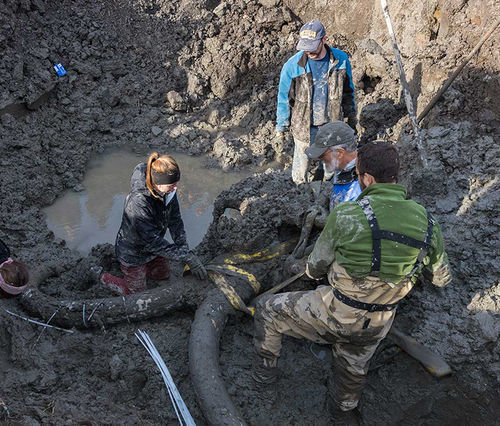
Amazed
A…Mammoth
It was a woolly mammoth! Far from the cries of it being an elephant. News companies were shocked, and jumped right on the story. The bones suffered aging, but no big cracks or breaks made it a true miracle find.

A…Mammoth
Heavy Machinery
They needed heavy machinery to lift it, though. They had to come up with a way to lift this mammoth thing. They decided that James’ excavator would do the trick after some deliberation. They used heavy-duty straps to protect it.

Heavy Machinery
Cleaning It
They had to lift the skull cautiously over time to protect it, but it had to be moved ten feet before it was out of the deep hole. Once it was removed, it had to be cleaned and assessed scientifically.

Cleaning It
Lifting It Up
Everyone held their breath and watched over a few minutes while the skull floated in the air. One bash, and the skull might fall apart. It had to be centuries old. Unfortunately, just as the skull was seeing the light…

Lifting It Up
It Went Wrong
While it was being lifted, one of the straps snapped. Everyone gasped, watching tensely while the team tried to keep it all together. The tusks swung frantically, making people even more tense. Luckily, the other straps stopped the tusks’ momentum.

It Went Wrong
To The Truck Bed
The goal was taking bones from the hole to the truck bed, and they almost didn’t get there. But, things worked out and eventually the skull was lowered onto the truck bed. But what were the odds of these events happening?

To The Truck Bed
Scattered Fossils
What about the other discoveries? Glyptodonts are found all over the world – not just Argentina. Their fossils are scattered on every single continent. They have gone from Australia to China to Antarctica. But nobody knows what these animals really are.
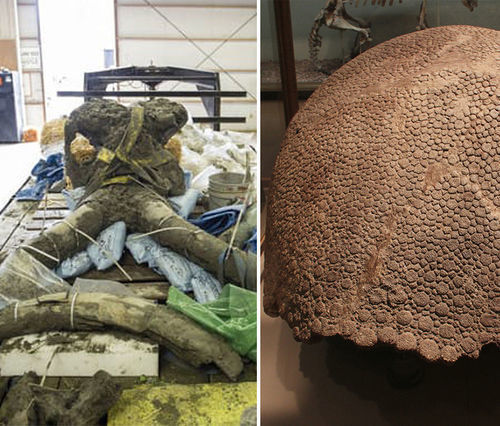
Scattered Fossils
Weighing A Ton
Although they are extinct, glyptodonts are one of the best defended animals. They are just like armadillos, with their hard exterior. In fact, they are related to the armadillo. Both animals share the same DNA, except glyptodonts weigh a ton.

Weighing A Ton
35 Million Years
They originated about 35 million years ago, so Jose finding a shell so close to the surface was incredibly rare. Glyptodonts had to evolve from 12 pounds armadillos to weighing a ton – literally – and having a club tail for fighting.

35 Million Years
Hunted
Glyptodonts are actually extinct thanks to humans. Their shells are great against animal predators, but humans could target them easily. They are enough meat to last our ancestors a month and their shells are the perfect shelter against bad weather.

Hunted
Useful Shell
It is definitely possible that the shell Jose found was used by humans as shelter. The shell is tough, making it incredibly useful for nomads like humans. Nowadays, other animals are being hunted to extinction. The humpback whale, for example.
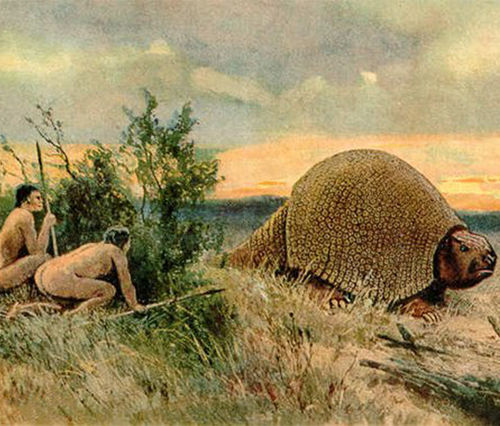
Useful Shell
Other Animals
The humpback whale has since recovered in numbers thanks to laws passed restricting hunting. The rhinoceros is endangered as well. Perhaps one day, generations after us will find a rhino horn and wonder what that fossil they found came from.

Other Animals
Research Began
But what about mammoths? How did they become extinct? Once the bones were found by James and taken in, they unveiled some exciting things. The research began with the sorting and dating of these bones to find out their back-story.

Research Began
Piecing Together
They had to piece together some of the bones’ parts. From looking at the bones, they found out that mammoths are actually very recently extinct. They were presumed to also explore South America, but went extinct 11 700 years ago.

Piecing Together
30 Findings
30 findings of mammoth fossils have been found, but James’ is the largest. They could also see that humans were a part of this mammoth’s history. From fractures in the skull, it was plain that humans tried to hunt it.

30 Findings
Simple Farmer
James was a simple farmer. He liked his life. He liked having this discovery, sure, but he had no use for it. So he decided to donate it to the University of Michigan’s school gallery. They now display the bones.

Simple Farmer
Two Excavations
There were two excavations. The first was when James found the lucky fossil. This is when about 40% of the mammoth fossil was found. The University decided to do a second one as well. They discovered 40 more bones then.

Two Excavations
Information Needed
“This return to the site was a success. We got the kind of information that we need to do the science right, and we were also able to recover an impressive amount of additional material from this animal,” Fisher said.

Information Needed
45 Year Old Male
From these bones, the paleontology team, with Fisher of course, determined that the mammoth was forty five years old. It was a male, Fisher even noted that to find a large amount of bones, so well preserved was extremely rare.

45 Year Old Male
The Chances
Both discoveries were rare on their own, but the chances of both farmers finding fossils so well intact at the same time are almost none. The research being done on the fossils is extraordinary, and will make way for future breakthroughs.

The Chances








